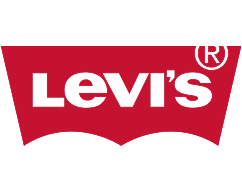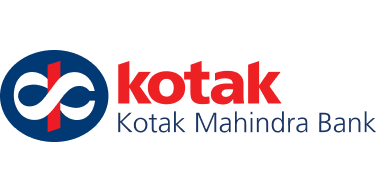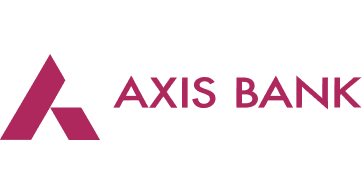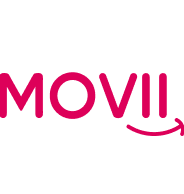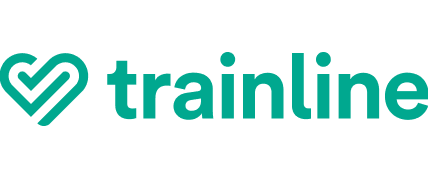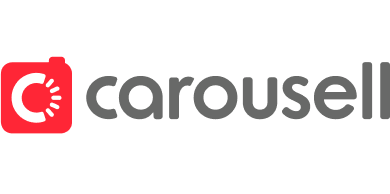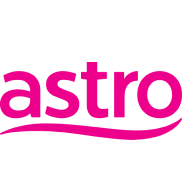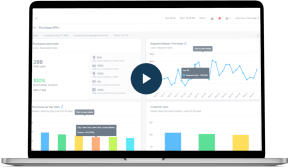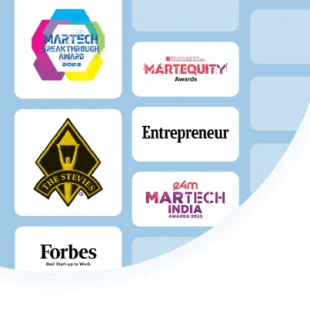In today’s world, inclusion is no longer a courtesy; it’s a necessity. With over 1.3 billion people worldwide with disabilities, accessibility must be hardwired into products and services to ensure equal access to key digital and physical experiences, not bolted on after the fact.
Digital accessibility isn’t just about convenience – it’s about basic participation in modern life. Whether it’s accessing a bank account, purchasing essentials online, or reading an article online, inclusive design ensures that no one is left behind. Yet, many digital experiences today remain unintentionally exclusive, creating barriers that alienate a significant segment of the population.
Enter the European Accessibility Act (EAA), a pivotal regulatory step toward making inclusion the norm rather than the exception. By standardizing accessibility requirements across member states, the EAA not only empowers individuals with disabilities but also provides a unified framework for businesses to meet these expectations effectively.
This blog explores the EAA through the lens of marketers – why it matters, what it mandates, and how forward-thinking brands can turn compliance into a competitive advantage.
Decoding the European Accessibility Act (EAA)
What is the European Accessibility Act (EAA)?
The European Accessibility Act (EAA) is a directive adopted by the European Union (Directive (EU) 2019/882) aimed at improving the accessibility of products and services across member states. It focuses on standardizing the rules for accessibility, aligning with the broader goal of building a more inclusive society.
“Accessibility should be achieved by the systematic removal and prevention of barriers, preferably through a universal design or ‘design for all’ approach, which contributes to ensuring access for persons with disabilities on an equal basis with others,” the directive reads.
What is the Scope of the EAA?
The act encompasses a wide range of products and services, including:
- Access to audio-visual media services, such as television broadcasts and related consumer equipment
- ATMs, ticketing, and check-in machines
- Banking services
- Computers and operating systems
- e-books
- e-commerce
- Smartphones
- TV equipment related to digital television services
- Telephony services and related equipment
- Services related to air, bus, rail, and waterborne passenger transport
Furthermore, the EAA applies to a broad spectrum of “economic operators” from both the public and private sectors, including manufacturers, importers, distributors of the covered products, and service providers offering the covered services. It is also applicable to non-EU companies that place products on or offer services within the EU market, ensuring that all consumers benefit from consistent accessibility standards regardless of where the provider is based.
What are the EAA Requirements?
The key accessibility requirements for products and services have been outlined in Annex I of the official directive (Directive (EU) 2019/882). These include:
- Multi-sensory information: Product information, such as labels and instructions, must be made available via more than one sensory channel – visual, auditory, or tactile. For example, in the case of in-app messages or push notifications, marketers should ensure that their content is compatible with talkback capabilities for all devices to support users with visual impairments.
- Understandable and perceivable content: Information must be presented in clear, logical, and perceivable formats to accommodate different cognitive and sensory needs. For example, a health app uses plain language with simple icons to explain dosage schedules.
- Legible formatting: Use of readable fonts, sufficient contrast, and adjustable spacing to enhance visual accessibility. For example, a banking website uses large fonts with high contrast between text and background.
- Accessible usage instructions: Instructions must explain how to activate accessibility features and include interoperability details with assistive technologies. For example, brands should ensure that basic features such as pinch-to-zoom should be allowed for images, and coach marks should be made available for first-time users.
- Alternative formats: Content must be provided in text formats that can be converted into alternative assistive formats such as Braille or audio. For example, an eBook platform allows users to download books in audio and text-only formats.
- Non-text content alternatives: Any non-textual content, such as icons and images, must be accompanied by text descriptions. For example, a marketing email should include alt text for product images describing the image’s content.
- Interfacing with assistive tech: Products must describe hardware/software compatibility with assistive devices, such as screen readers, Braille displays, and others. For example, a web dashboard is tested to ensure it works smoothly with NVDA and VoiceOver screen readers.
- Accessible user interfaces: The design must allow persons with disabilities to access, operate, and control the product through multiple input/output modalities. For example, a video streaming app lets users navigate using voice commands, not just by tapping or swiping.
When does the Act Come Into Effect?
The Act will take effect on June 28, 2025. Thereafter, all covered products and services must comply with EAA requirements if the business operates within Europe or serves customers residing in Europe, or could otherwise face potential penalties.
Impact of the EAA on Customer Engagement and Retention
The European Accessibility Act is more than a compliance directive – it’s a wake-up call for brands to rethink how inclusivity is baked into customer experience design. While legal and product teams may focus on conformance, marketers and brand leaders must view accessibility as a strategic lever for deeper engagement, stronger loyalty, and long-term customer value.

1. Enhanced Trust and Brand Reputation
Accessible design communicates empathy, foresight, and responsibility. For marketers, this means ensuring that every touchpoint across website, app, campaign, or customer support interaction is inclusive by design, which in turn helps augment the brand’s trustworthiness, reach, and relevance.
Conversely, inaccessible campaigns or platforms may trigger public backlash, poor press, and lost customer trust, especially as consumers become more vocal about inclusion and equality. In a reputation-driven digital economy, inclusive brands build trust; inaccessible ones lose it.
2. Improved User Experience for All
Accessibility improvements, such as alt text for images, captions on videos, keyboard navigation, or adaptable text size, don’t just benefit users with disabilities. They enhance the overall usability of your product/service:
- Clearer navigation and better readability benefit mobile-first users.
- Video captions increase content reach and retention.
By embedding accessibility into design systems, content workflows, and martech tools, brands can future-proof their marketing operations while expanding their audience and improving engagement metrics.
3. Greater Engagement and Loyalty
Accessible content unlocks more consistent engagement by removing friction for diverse users. The impact is measurable:
- Lower churn due to improved usability and inclusivity.
- Higher session duration and conversion from easier navigation.
- Long-term retention of aging populations or users with progressive conditions.
4. Market Expansion Through Inclusion
Accessibility isn’t just an ethical obligation for brands; it’s a business opportunity. It opens the door to previously underserved audiences, such as:
- Seniors, whose numbers are rapidly growing across digital channels.
- People with temporary impairments.
- Users in situationally challenging contexts, like poor lighting or loud settings.
Ignoring accessibility alienates a sizable and growing customer base – an estimated 87 million EU citizens have some form of disability. This not only impacts revenue potential but also undermines brand equity in an era where consumers increasingly align with companies that demonstrate ethical leadership.
5. Compliance Fuels Global Readiness
As more countries introduce digital accessibility laws, such as the Americans with Disabilities Act (ADA) in the U.S. or Canada’s Accessible Canada Act, the EAA is not an isolated compliance requirement but part of a global shift toward inclusive regulation.
For marketers at global or growth-stage brands, meeting EAA standards positions their brands for faster entry into new regions, smoother localization, and proactive compliance with other regions’ accessibility expectations. In short, building with accessibility in mind today can reduce costs, complexity, and time-to-market tomorrow.
What Marketers Should Do: An Action Plan for EAA Compliance
Marketers have a key role to play in ensuring compliance while using accessibility as a strategic advantage to build loyalty, trust, and revenue. To align with the EAA, they need to:
1. Audit All Digital Touchpoints
Start with a clear picture of where your brand stands:
- Conduct accessibility audits across websites, landing pages, email templates, and in-app flows. Check for issues like low color contrast, missing alt text, unlabelled buttons, and screen reader incompatibility.
- Ensure that WCAG 2.1 and WCAG 2.2 guidelines are followed as baseline benchmarks.
2. Collaborate Across Teams
Accessibility isn’t a siloed effort – it’s a cross-functional priority:
- Use shared design systems with accessible UI components. This ensures that the buttons, forms, menus, modals, and other building blocks are “accessible by design”, eliminating the need to audit every page or feature manually. For example, if a brand’s design system includes a pre-tested, EAA-compliant button component with proper color contrast, keyboard focus states, and screen reader labels, every team using that button, from marketing to product, can confidently build accessible experiences.
- Ensure built-in accessibility of your content in compliance with the EAA
3. Prioritize Inclusive Messaging
The way a brand communicates reflects its ethics and values. Marketers should:
- Write in clear, concise, and plain language that’s easy to understand.
- Ensure all images have descriptive alt text, and provide transcripts or captions for videos.
- Represent people with disabilities authentically and respectfully in your visuals, avoid stereotypes or tokenism. For example, when creating an automated email campaign, ensure that the email templates are screen-reader compatible, use sufficient color contrast, and include descriptive subject lines and CTA buttons. This not only aligns with EAA requirements for digital accessibility but also ensures that users with visual or cognitive impairments can navigate and engage with the content equally.
4. Leverage Tools for Personalization with Care
Respect diversity in engagement:
- Let users choose how they receive messages – SMS, email, push notifications, or other channels. For example, an e-commerce brand gives users the option to receive order updates via email, SMS, or app notifications, so customers who use screen readers or have hearing impairments can select the most accessible format for them.
- Design journeys that adapt to user needs, not assumptions. For example, instead of assuming all users can navigate a promotional banner carousel, an app offers a static, text-based summary of the offer that’s accessible via keyboard and screen reader. This allows users with motor impairments or low vision to engage with the content without relying on gesture-based or time-sensitive actions.
- Build segmentation that accounts for behavioral preferences and accessibility, not just demographics. For example, rather than targeting “young users” solely based on age, a streaming platform notices that some subscribers consistently use subtitles, voice commands, and slower playback speeds. It creates a segment for these users and offers accessibility-first content tips and updates, showing respect for actual user behavior and accessibility needs.
5. Make Accessibility a Marketing KPI
Accessibility should be measured, not assumed:
- Include accessibility metrics in campaign performance reviews. For example, the percentage of emails passing accessibility checks (contrast, alt text, and more), drop-off rates for users with assistive tech settings enabled (such as screen readers), and other metrics.
- Conduct regular testing and updates as part of optimization workflows. For example, before launching a campaign, marketers run email templates through accessibility checkers like WAVE or aXe, verify that landing pages are usable via keyboard and compatible with screen readers, and review CTA buttons and form fields to ensure they are labeled and focusable.
- Train content creators, designers, and marketers on accessibility best practices. The marketing team can host quarterly training sessions that cover essential topics such as writing effective alt text for images and logos, crafting clear, actionable text for links and buttons, providing transcripts for pre-recorded videos, and using inclusive language. These sessions should also address ensuring all interactive elements (links, buttons, forms) are fully navigable and operable using only a keyboard, as well as selecting accessible color palettes and font sizes. Also, they should demonstrate how common errors, like using images of text or missing labels, negatively affect screen reader users. To support ongoing learning, the team should also create a shared resource hub with quick reference guides, accessibility checklists, and brand-approved accessible templates.
Future-Proofing Engagement Through Accessibility
Accessibility isn’t just about compliance; it’s about creating meaningful, barrier-free experiences that reflect the diversity of your audience. The European Accessibility Act challenges brands to think beyond minimum standards and reimagine inclusion as a growth enabler. For marketers, it’s an opportunity to lead with empathy, expand reach, and build trust through inclusive engagement.
By acting now, B2C businesses can not only meet the June 28, 2025, deadline but also position themselves as leaders in inclusive customer engagement.
Piyush Dutta 
As a product manager at CleverTap, Piyush Dutta develops innovative solutions that bridge the gaps between business, technology, and customer needs.
Free Customer Engagement Guides
Join our newsletter for actionable tips and proven strategies to grow your business and engage your customers.





